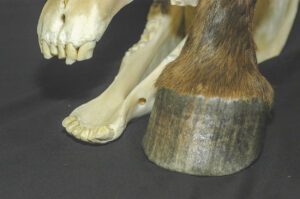Finding Housing for Horses During Evacuations

In the latter case, finding a place to ride out the weather in safety can be challenging. But that challenge is compounded for owners evacuating their horses from a storm’s path. Where do you drop a 1,100 pound animal to keep them safe from natural disasters? Here are some places you can look to find equine evacuation sites before the flood waters start rising.
Prepare in Advance
Don’t wait until disaster is on your doorstep to find a place to take your horses or decide what supplies need to stay or go. Do your homework ahead of time.
Once you’ve selected an evacuation site, determine what health requirements the facility has and what documentation you’ll need from your veterinarian—such as proof of a negative Coggins test or a health certificate—in order to bring horses there in case of an emergency.
Also, find out in advance whether you’ll be expected to bring bedding, feed, and other horse-keeping supplies, and who is responsible for caring for your horse during an evacuation. While many sites require the owner to supply everything their horse will need during their stay, others might have supplies available for purchase. And determine if it’s your responsibility to feed, water, and clean your horse’s stall or paddock (and if so, is there lodging for you at the center as well?), or whether someone will be available to help should you need to seek shelter in another location.
Be sure to find out what the protocol is for bringing horses to the evacuation site (for instance, do you need to call in advance or can you just show up?), and find out if there’s a fee to house your horse. While many sites are available to owners for free, others charge a small fee or accept donations. And, if possible, visit your evacuation site of choice ahead of time so you’re familiar with the area when emergencies arise.
Be sure your horse has appropriate identification prior to bringing him to an evacuation center—imagine how many chestnut geldings could show up at the same place!—as some facilities require them in order to house your horse. Find out in advance what type of identification your evacuation center of choice prefers. Photographs (preferably one from each side, one from the front, and one from behind, with the owner included in the images), microchips, lip tattoos, and gently etching the owner’s name and phone number on the hoof wall (be careful not to go too deep) are all common and suitable forms of identification.
Finally, if you own or might be evacuating a colt or stallion, check with evacuation sites to ensure they allow intact male horses before transporting him there.
—Erica Larson
Local equine associations and horse councils Some local equine associations, such as the Boulder County Horse Association, in Colorado, have listings of animal control resources and information regarding evacuation sites. Additionally, some organizations allow you to volunteer your farm or trailer to help in the event of a disaster and maintain a database, like Horse Council British Columbia, in Canada. If your local association or council doesn’t maintain a list of evacuation sites, they might be able to point you in the right direction of where else you could look.
Social media In today’s technologic world, social media (Facebook, Twitter, etc.) is becoming a valuable resource for getting and providing real-time information about natural disasters. Horse Evacuations East, for example, is simply designed to “connect people who need evacuation assistance and shelter for horses during a natural disaster to those who can provide it.” It’s each horse owner’s responsibility to research the offerings on the page, but this tool can be valuable for making connections with local equestrians you might be able to help, or who might be able to help you.
Local emergency management agencies Your local emergency management authority is tasked with doing just what its name implies: managing emergencies. Thus, they likely have knowledge about evacuation sites for all kinds of situations, including evacuating horses. Contact your local agency with questions regarding equine evacuations.
When it comes to maintaining your horse’s safety, always be prepared to act on a moment’s notice. This means finding an equine evacuation site before a disaster threatens. Work with local agencies, associations, and horse people to devise your equine evacuation plan ahead of time.

Related Articles
Stay on top of the most recent Horse Health news with

















